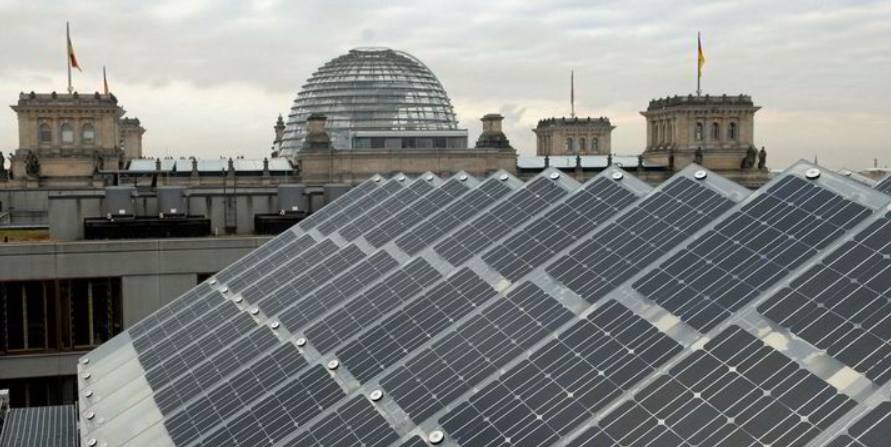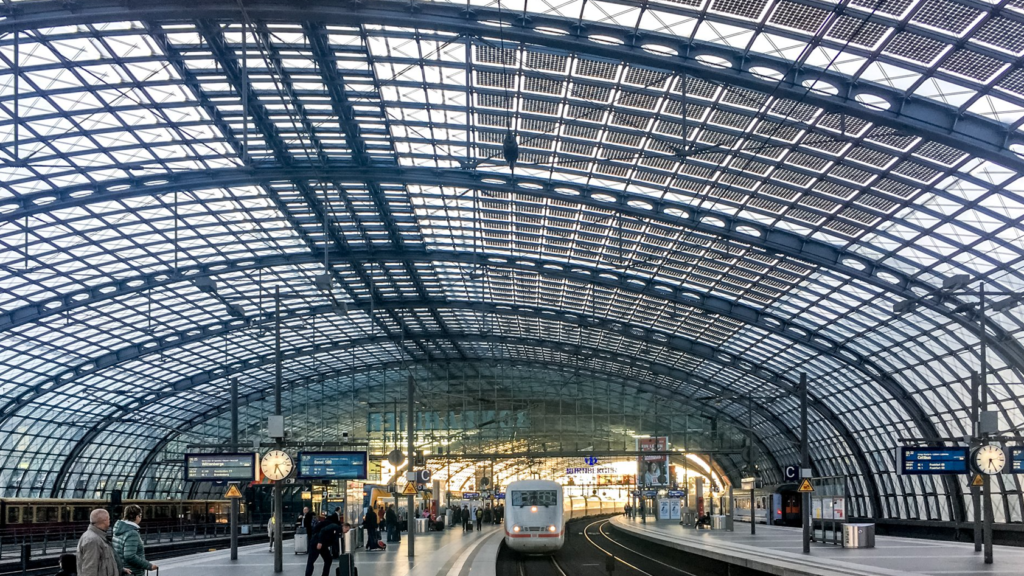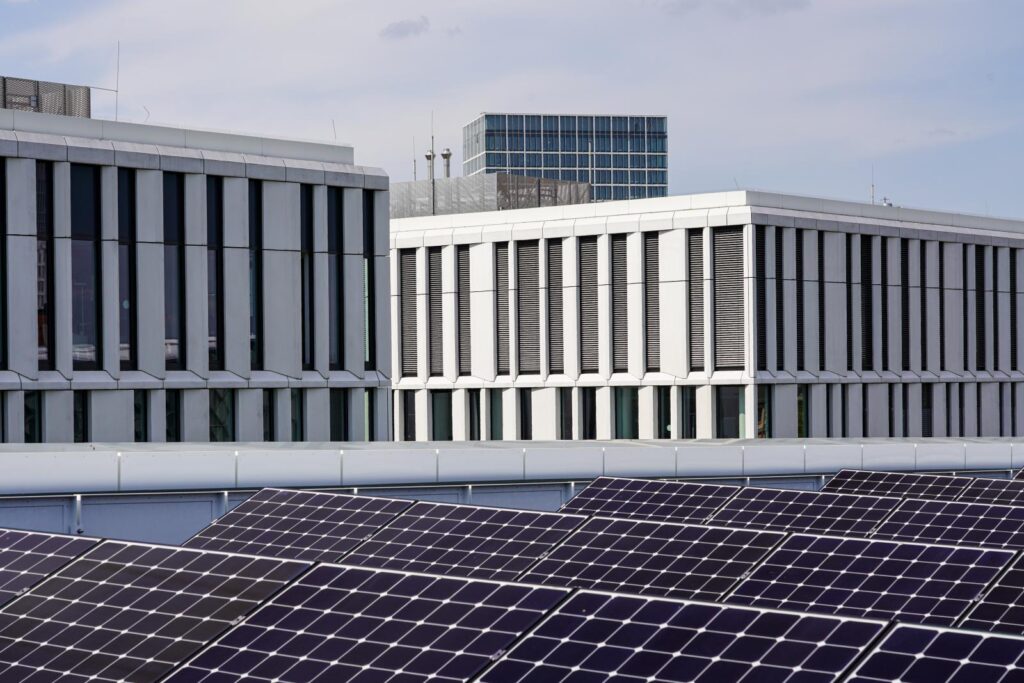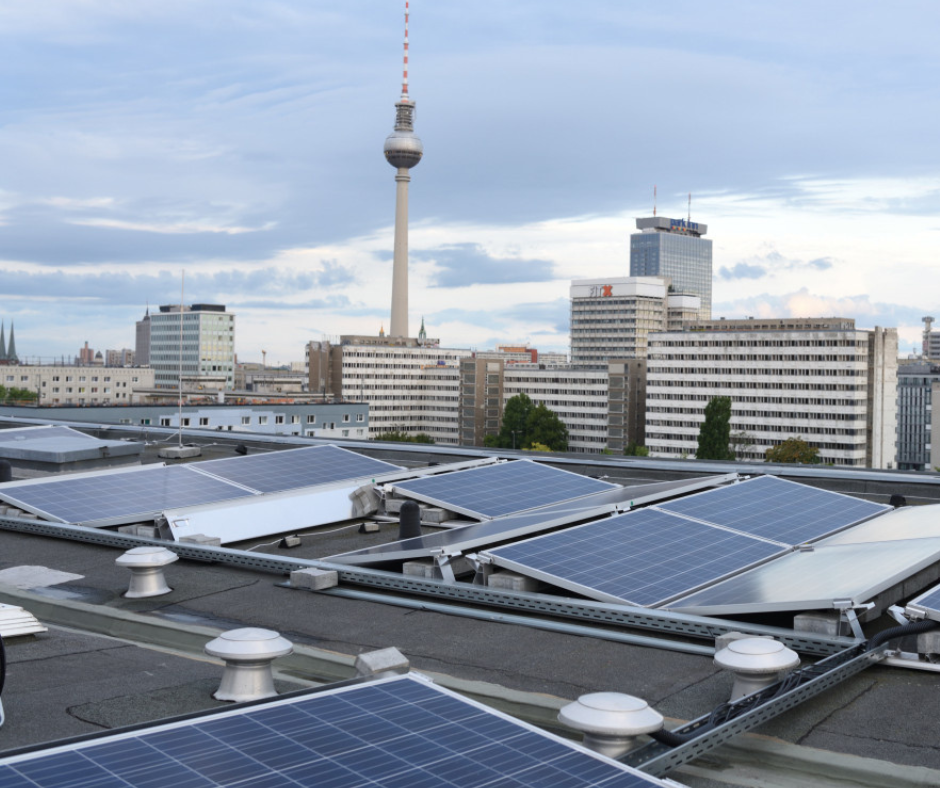The capital of Germany — Berlin — is an example of the European city, which makes active steps toward climate neutrality. Until 2050 Berlin aims to provide 25% of its electricity needs, using renewable energy sources.
Last year the local government started to provide financial support for private households, companies and non-profit associations, which wanted to establish solar panels. Summarily the government gave subsidies for 15 300 euros.
The article tells how the capital of Germany accelerates its energy transition to renewable energy sources.
The target of making the city carbon-neutral by 2050
In 2020 the local government accepted a plan which regulates the quantity of established solar panels on the building roofs all over the city. It aims to increase its own electricity supplies made from renewable energy sources to 25%. This plan is a part of the general city’s climate-neutral plan by 2050.
To reach this goal, the city should change its transport, electricity and heating systems, using renewables. In 2017 Berlin became the first city in Germany, which accepted its own law about mobility aimed to develop public transport, mobility and bicycle systems with zero level of emissions.
The plan, which was accepted by Berlin`s senat, was developed by experts from ISE and stakeholders from various sectors. The document has 27 recommendations for increasing the level of solar panels, including studies and incentives for property owners.
Berlin Solar Quarter
In September 1992, a symposium on the creation of the “Berlin Solar Quarter” was held in the Reichstag building. Since then, Solar Quarter has been operating in Berlin — it is 14 buildings on which solar panels have been established.
The general quarter`s area has nearly 9500 square meters. In 2019 Government solar quarter due to established solar stations produced 58% of electricity, and its thermal system — 57,500 kWh of heat.
In this chapter, we will tell you about a few quarter`s buildings, which have not only become a tourist attraction but also an example of how electricity supplies from renewables can be obtained.
Among other valuable facilities of the government solar quarter — the Reichstag building. There is a solar system established in the southern part of the Reichstag`s roof. The building is also supplied with energy by four heat-electric generating units, each with a capacity of 400 kilowatts. According to preliminary calculations, the use of biofuel and energy from the solar power plant will help the Reichstag reduce greenhouse gas emissions from 7,000 to 400 tons each year.

For more than 15 years a solar power plant has been operating on the platforms of Berlin’s central railway station. 780 solar modules with a total area of 1,700 square meters were integrated into the curved glass roof. This is the first example of the use of panels of non-standard sizes: station’s roof has an irregular shape, so each solar module has a different size. In total, the solar plant generates about 160,000 kilowatt-hours of “clean” electricity each year.

Another building in the government quarter, the Futurum (Museum of the Future), demonstrates the current solar energy development in Berlin. A solar power plant and vacuum tubular solar collectors were installed on the roof of the building. The museum consumes 17 kW/m2 of energy per year. Due to solar panels on the roof and a rainwater harvesting system, the Futurium museum is a building with almost zero energy consumption.

Learn more about the Solar Quarter in Berlin (technical characteristics of the project, energy consumption) via this link.
Specialists from all over the world come to see how the solar stations on the government quarter buildings in Berlin work. Among them are representatives of the Ecoclub Nataliya Lushnikova and Olena Kondratiuk, who took part in the study visit as part of the project “Repower Green Ukraine 2022”.
Project “Repower Green Ukraine 2022”
The German cooperative WECHANGE together with the Ukrainian organizations Ecoclub (Rivne) and the Agency for Sustainable Development “Synergia” (Vinnytsia) created a joint project in the field of “green” energy and ecological housing “Repower Green Ukraine 2022”. As part of the project, the participants took part in a study visit to Germany.
During the training, participants from Ukraine and Germany discussed the possibilities of creating energy cooperatives, the operation of solar, wind and biomass plants, and took part in an excursion to such facilities in Berlin and its suburbs.
This article is prepared within the framework of the Environmental Policy and Advocacy Initiative in Ukraine that has been implemented by the International Renaissance Foundation and enabled by the financial support from Sweden.
Views, conclusions or recommendations belong to the authors of this article and do not necessarily reflect the official position of the Government of Sweden. The responsibility over the content lies solely with authors of this article – the NGO Ecoclub.












